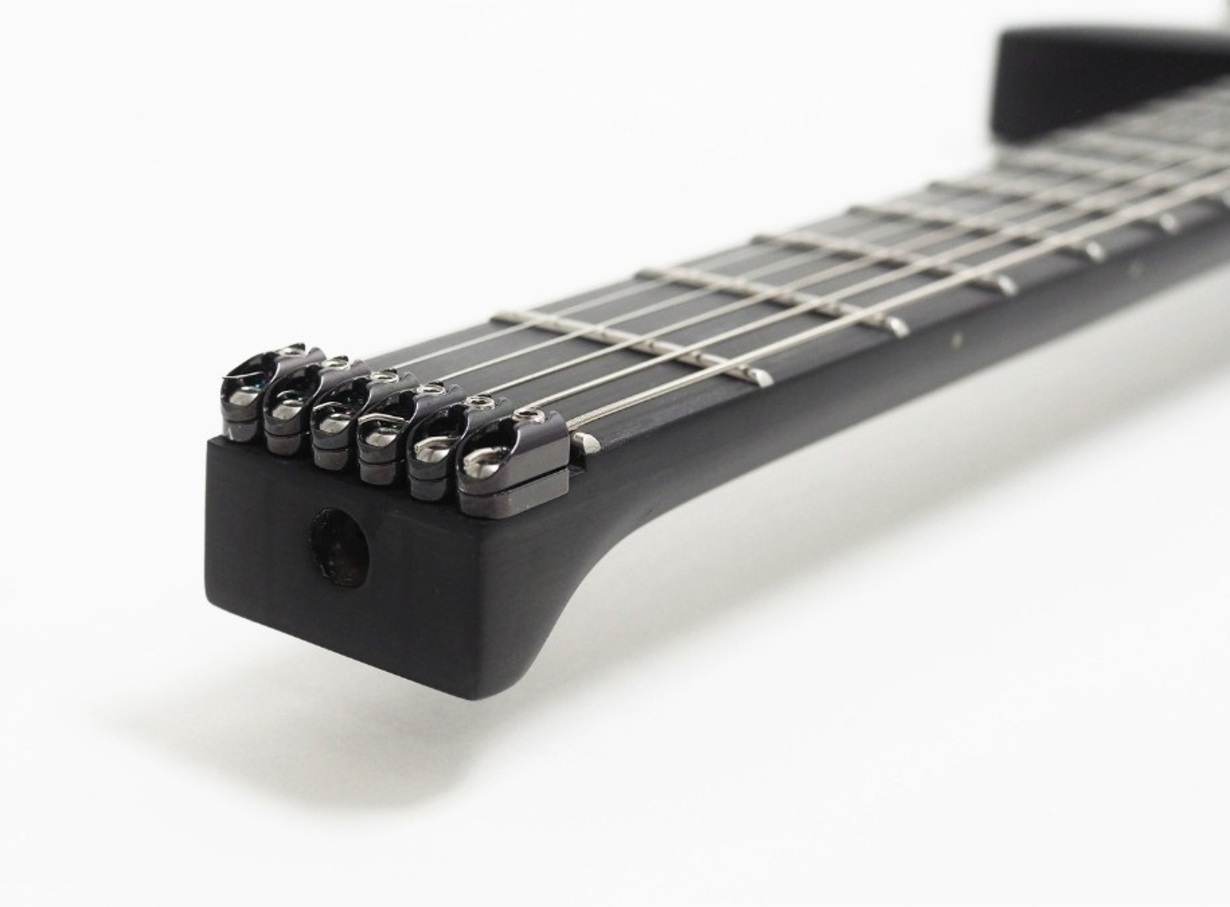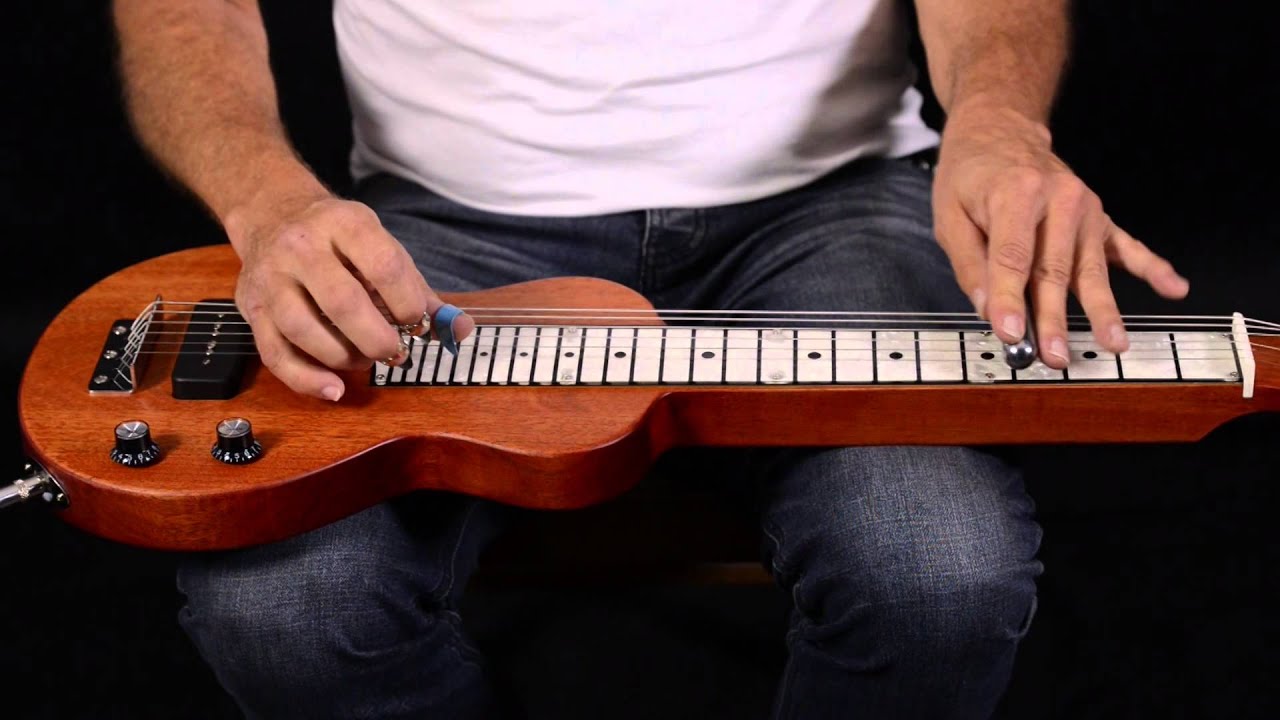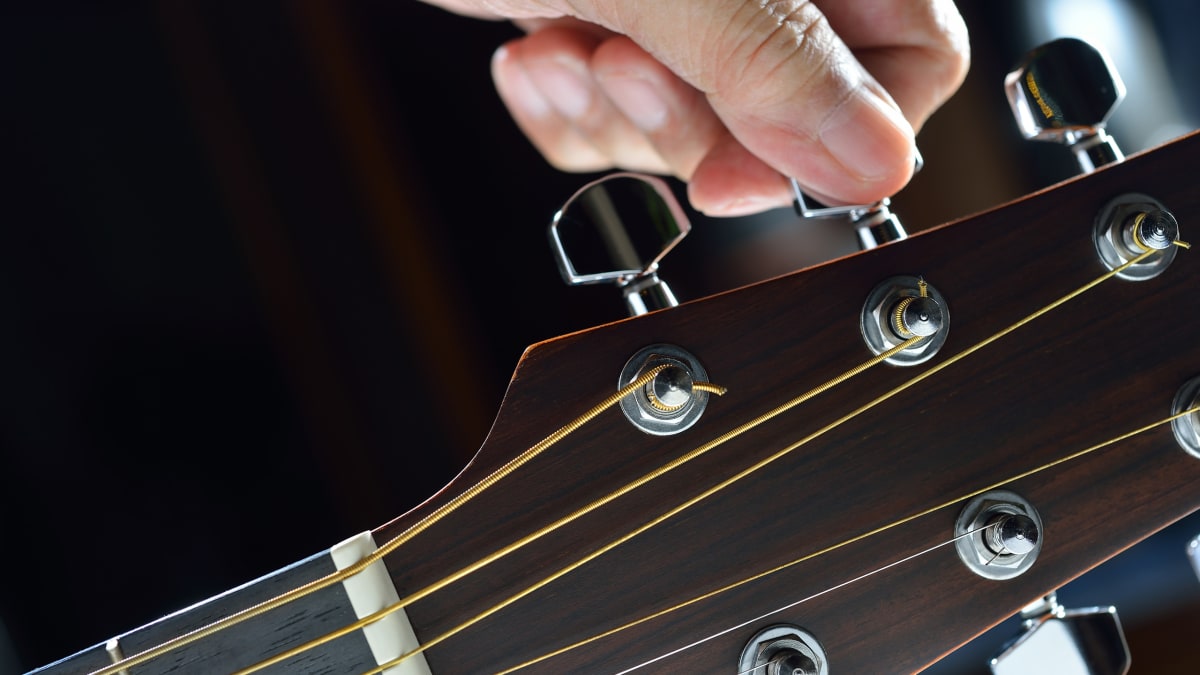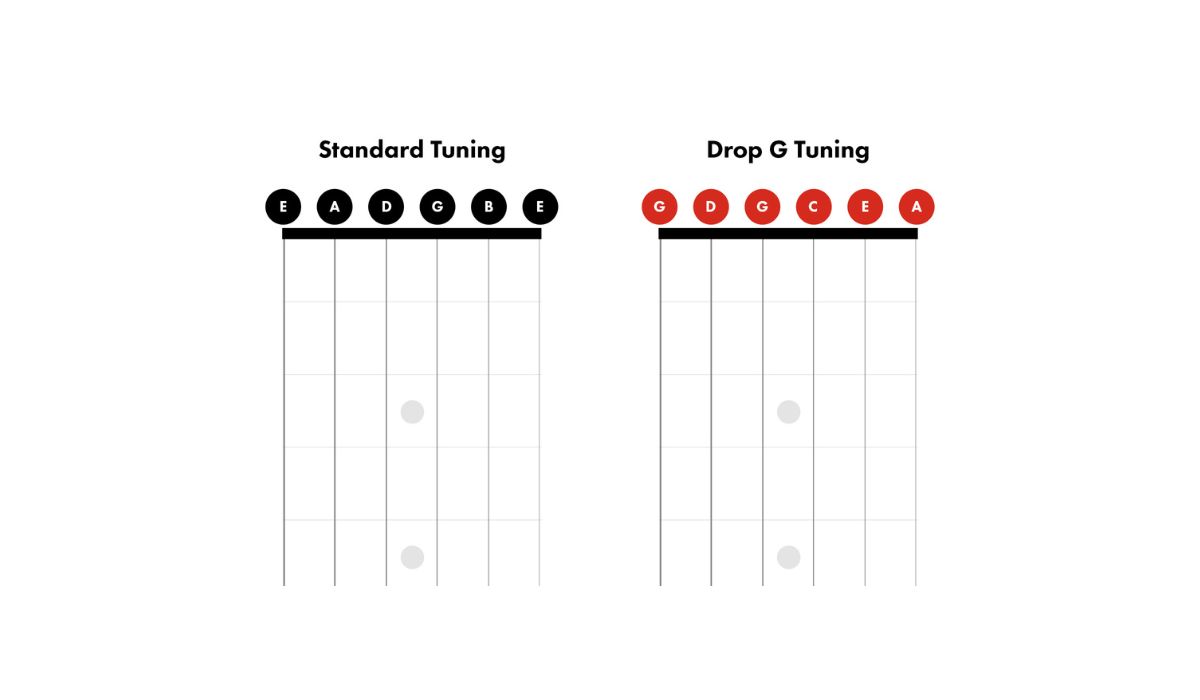Home>Instruments>Guitar>How To Tune A Guitar To Drop D
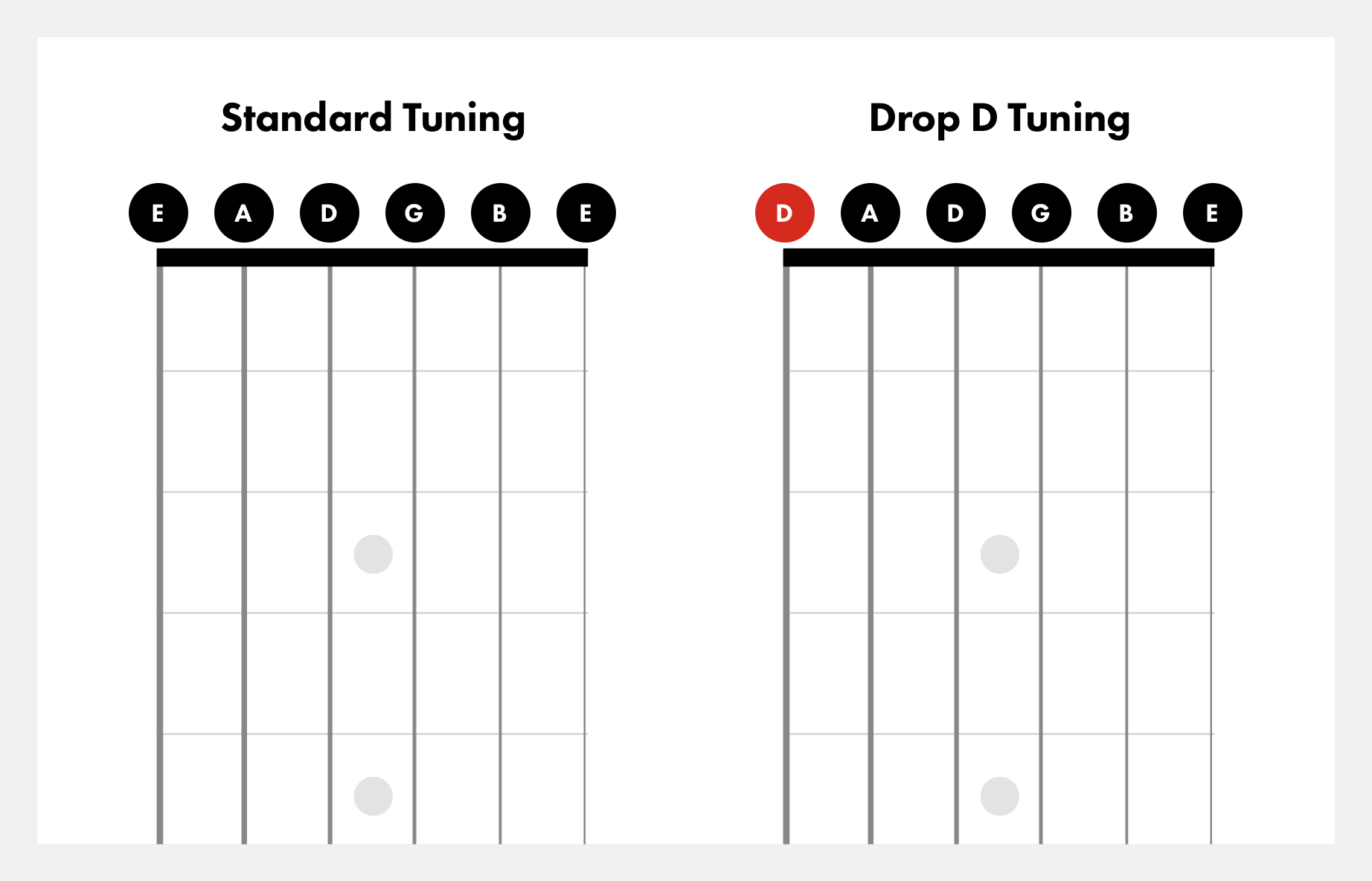

Guitar
How To Tune A Guitar To Drop D
Published: February 14, 2024
Learn how to tune your guitar to Drop D quickly and easily with our step-by-step guide. Get your guitar sounding perfect with our expert tips and tricks.
(Many of the links in this article redirect to a specific reviewed product. Your purchase of these products through affiliate links helps to generate commission for AudioLover.com, at no extra cost. Learn more)
Table of Contents
Introduction
Understanding Drop D Tuning
Drop D tuning is a popular alternative guitar tuning that offers a unique sonic palette and expanded creative possibilities for guitarists. In this article, we will delve into the intricacies of drop D tuning, exploring its origins, advantages, and practical application. Whether you're a seasoned guitarist looking to expand your repertoire or a beginner eager to explore new sounds, understanding drop D tuning can significantly enrich your musical journey.
Drop D tuning involves lowering the pitch of the low E string on the guitar to D, creating a rich and resonant sound that is particularly well-suited for rock, metal, and acoustic genres. This alteration not only provides a deeper, more robust tone but also facilitates power chords and single-finger chord shapes, offering enhanced versatility and ease of play.
By gaining a comprehensive understanding of drop D tuning, guitarists can unlock a myriad of creative possibilities, from crafting heavy riffs and thunderous bass lines to exploring melodic textures and harmonies that transcend traditional standard tuning. Whether you're seeking to emulate the thunderous sound of iconic rock anthems or to infuse your compositions with a newfound depth, drop D tuning is a valuable tool in your musical arsenal.
Throughout this article, we will guide you through the process of tuning your guitar to drop D, provide practical tips for playing in this tuning, and offer insights into leveraging its unique characteristics to enhance your musical expression. As we embark on this exploration of drop D tuning, prepare to expand your sonic horizons and elevate your guitar playing to new heights.
Understanding Drop D Tuning
Drop D tuning is a popular alternative guitar tuning that has been embraced by musicians across various genres for its distinct tonal qualities and versatile playability. In drop D tuning, the low E string is tuned down a whole step to D, resulting in a DADGBE tuning from the standard EADGBE. This simple yet impactful modification empowers guitarists to explore a wide range of musical styles and techniques, making it a valuable addition to their repertoire.
One of the defining features of drop D tuning is the enhanced resonance and depth it imparts to the guitar’s sound. By lowering the low E string to D, the instrument resonates with a fuller, more robust quality, lending itself particularly well to heavy, aggressive styles such as rock and metal. The lower pitch also facilitates the effortless execution of power chords, enabling guitarists to create thunderous, impactful chord progressions with minimal finger movement.
Beyond its suitability for heavy genres, drop D tuning offers a wealth of creative possibilities for melodic and harmonic exploration. The altered tuning opens up new chord voicings and intervals, allowing for rich, sonorous harmonies and expressive melodic passages. This versatility makes drop D tuning a favorite among acoustic guitarists seeking to infuse their playing with a deeper, more resonant tonality.
Furthermore, drop D tuning provides a seamless transition between standard chord shapes and those in drop D, offering a smooth learning curve for guitarists looking to expand their musical vocabulary. The adaptability of this tuning encourages experimentation and innovation, empowering players to craft unique compositions and arrangements that harness the distinctive characteristics of drop D.
Whether you’re drawn to the raw power of heavy riffs, the emotive depth of acoustic ballads, or the dynamic interplay of melodic and harmonic elements, drop D tuning presents a wealth of opportunities for musical expression. By familiarizing yourself with the nuances of this alternative tuning, you’ll embark on a sonic journey that transcends the boundaries of standard guitar playing, unlocking a world of creative potential and captivating sounds.
Tuning the Low E String to D
As you embark on the journey of tuning your guitar to drop D, it’s essential to approach the process with precision and care to ensure optimal sound quality and playability. Tuning the low E string to D serves as the foundational step in embracing drop D tuning, and mastering this adjustment will pave the way for an enriching musical experience.
To begin, it’s advisable to utilize an electronic tuner to achieve accurate results swiftly. Alternatively, you can tune your guitar to drop D by ear, but this method may require a keen sense of pitch and familiarity with the desired D note. If you opt for the latter approach, it’s beneficial to reference a reliable source, such as a piano or another tuned instrument, to attune your ear to the precise pitch of D.
With your tuner at the ready, pluck the low E string and observe the tuner’s display. As you gradually lower the string’s tension, the tuner will indicate the pitch in real time, allowing you to precisely reach the desired D note. Adjust the tuning peg accordingly, turning it in small increments to fine-tune the string’s tension until it aligns with the D pitch.
As the string approaches the target pitch, it’s crucial to periodically check the tuning by plucking the string and monitoring the tuner’s feedback. This iterative process ensures that the string’s tension is meticulously calibrated to produce a resonant, stable D note. Exercise patience and attentiveness during this phase, as achieving an accurately tuned low E string is fundamental to the success of drop D tuning.
Once the low E string is tuned to D, take the opportunity to familiarize yourself with the newfound depth and resonance that this lower pitch imparts to your guitar’s sound. Strumming the open D chord in drop D tuning will reveal the rich, sonorous quality that defines this alternative configuration, offering a glimpse of the creative potential that awaits you.
By mastering the art of tuning the low E string to D, you’ll lay a solid foundation for exploring the expressive capabilities of drop D tuning. This foundational adjustment sets the stage for a transformative musical journey, opening the door to a myriad of playing styles and creative avenues that harness the unique tonal qualities of drop D.
Checking the Other Strings
After successfully tuning the low E string to D, the next crucial step in embracing drop D tuning involves ensuring that the remaining strings are harmoniously aligned with the altered configuration. This meticulous process of checking and adjusting the other strings is essential for achieving a balanced, cohesive sound and optimizing the playability of your guitar in drop D tuning.
Begin by focusing on the A string, which now serves as the new low string in drop D tuning. Pluck the open A string and use your tuner to ascertain its pitch. If necessary, make precise adjustments to the tuning peg, gradually fine-tuning the tension until the A string resonates with a clear, stable D note. Pay close attention to the tuner’s feedback, ensuring that the string’s pitch aligns seamlessly with the desired D tone.
Proceed to the D, G, B, and high E strings, evaluating and adjusting each one to ensure they complement the lower, resonant tonality established by the drop-tuned low strings. Plucking each string and meticulously fine-tuning its tension will enable you to achieve a cohesive, harmonized tuning across all strings, culminating in a balanced and sonically rich drop D configuration.
Throughout this process, it’s essential to maintain a keen focus on precision and attentiveness, as each string’s tuning contributes to the overall resonance and playability of the drop D tuning. Regularly referencing your tuner and making incremental adjustments will yield optimal results, laying the groundwork for a seamless and rewarding playing experience in drop D.
As you meticulously align each string with the drop D configuration, take the opportunity to familiarize yourself with the unique sonic characteristics and expressive potential that this alternative tuning offers. Experiment with chord voicings, melodic phrases, and dynamic playing techniques to fully immerse yourself in the captivating soundscapes facilitated by drop D tuning.
By conscientiously checking and fine-tuning the other strings to complement the drop-tuned low strings, you’ll establish a harmonious and resonant foundation for your guitar playing. This comprehensive approach ensures that each string contributes to the cohesive, immersive sound of drop D tuning, empowering you to explore a diverse range of musical styles and unleash your creative prowess with confidence.
Tips for Playing in Drop D Tuning
As you immerse yourself in the captivating realm of drop D tuning, it’s valuable to acquaint yourself with practical tips and insights that will enhance your playing experience and expand your creative horizons. Whether you’re delving into heavy, riff-driven genres or exploring the melodic intricacies of acoustic compositions, these tips will empower you to leverage the unique characteristics of drop D tuning and elevate your musical expression.
Explore Power Chords and Riffs: Embrace the thunderous potential of drop D tuning by delving into power chords and dynamic riffs that capitalize on the lower, resonant tonality. The altered tuning facilitates effortless power chord shapes and empowers you to craft impactful, driving riffs with minimal finger movement, offering a compelling foundation for rock, metal, and alternative styles.
Experiment with Open Chord Voicings: Harness the rich, resonant sound of drop D tuning to explore open chord voicings that resonate with depth and expressiveness. Embracing alternative fingerings and voicings will unveil a spectrum of emotive textures and harmonic nuances, enriching your compositions and arrangements with captivating tonal qualities.
Embrace Melodic Exploration: Capitalize on the expanded sonic palette of drop D tuning to delve into melodic exploration, weaving expressive melodies and harmonies that resonate with newfound depth and resonance. The altered tuning opens up new melodic possibilities and intervals, empowering you to infuse your playing with captivating melodic motifs and evocative phrasing.
Leverage Open Strings for Dynamic Texture: Embrace the resonant quality of open strings in drop D tuning to introduce dynamic textures and sonorous embellishments into your playing. Experiment with open string drones, cascading arpeggios, and harmonic embellishments to enrich your compositions with a lush, expansive sonic landscape.
Adapt Standard Repertoire to Drop D: Explore the adaptability of drop D tuning by reimagining and adapting your existing repertoire to harness the unique tonal qualities of this alternative configuration. Transforming familiar songs and compositions into drop D opens up new creative avenues and infuses them with a fresh, captivating resonance.
By embracing these tips and integrating them into your explorations of drop D tuning, you’ll unlock a wealth of creative potential and elevate your guitar playing to captivating new heights. Whether you’re drawn to the raw power of heavy riffs, the emotive depth of acoustic arrangements, or the dynamic interplay of melodic and harmonic elements, drop D tuning offers a rich tapestry of sonic possibilities for you to explore and express your musical vision.
Conclusion
As we conclude our exploration of drop D tuning, it’s evident that this alternative guitar configuration holds immense potential for transforming your musical journey and expanding your creative horizons. By delving into the nuances of drop D tuning, you’ve embarked on a sonic adventure that transcends the boundaries of standard guitar playing, offering a wealth of expressive possibilities and captivating tonal qualities.
Through the process of tuning the low E string to D and harmonizing the remaining strings, you’ve laid a solid foundation for embracing the resonant, dynamic soundscapes facilitated by drop D tuning. The lower, more robust tonality of drop D empowers you to explore power chords, melodic textures, and harmonic nuances with enhanced ease and versatility, enriching your compositions and arrangements with captivating depth and resonance.
As you immerse yourself in the world of drop D tuning, remember to embrace experimentation, innovation, and creative exploration. Whether you’re drawn to the thunderous energy of heavy riffs, the emotive depth of acoustic ballads, or the dynamic interplay of melodic and harmonic elements, drop D tuning invites you to craft compelling musical narratives and express your unique voice with confidence and authenticity.
By integrating the practical tips and insights shared in this article into your musical endeavors, you’ll harness the full potential of drop D tuning, unlocking a spectrum of sonic textures and expressive nuances that elevate your guitar playing to new heights. Embrace the resonance, versatility, and creative freedom offered by drop D tuning, and let its unique tonal qualities inspire and enrich your musical expression.
As you continue to explore the captivating possibilities of drop D tuning, remember that the journey of musical discovery is as boundless as your imagination. Whether you’re crafting evocative compositions, unleashing thunderous riffs, or weaving melodic tapestries, drop D tuning invites you to embark on a rich and rewarding sonic odyssey, where every note resonates with depth and meaning.
Embrace the resonance, versatility, and creative freedom offered by drop D tuning, and let its unique tonal qualities inspire and enrich your musical expression.


